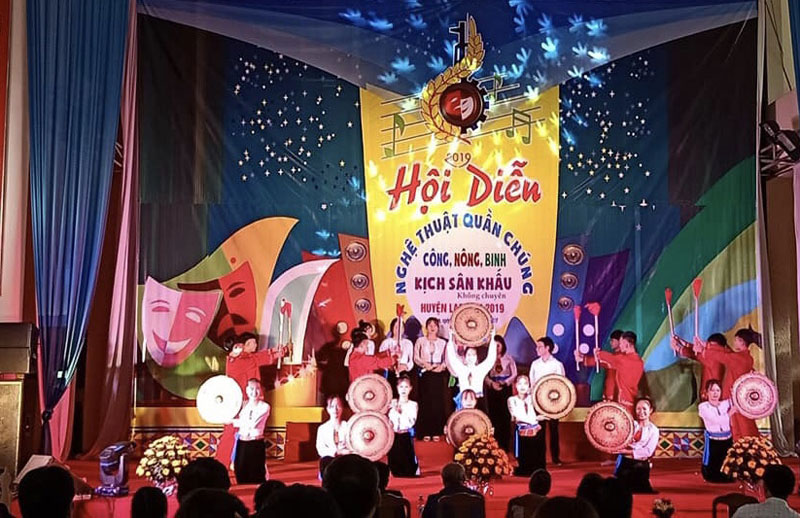
(HBO) - In 2019, there were 28,700 households in Lac Son district achieving the title of cultural family, reaching 83.1%. There were 252 residential areas being recognized as the cultural residential areas, gaining 82.5%, 155 agencies and units achieved the title of agencies and units meeting the cultural standards, reaching 98%, 8 communes meeting the standards of new rural areas, and 100% of the hamlets and the residential areas reviewed, renewed their conventions and regulations.
They have been paid attention to the construction investment
in the cultural works and institutions. Up to now, there have been 267 out of
the 252 villages and residential areas with cultural houses, reaching the rate
of 105.9%. In the whole district, 45,500 people have maintained and developed
regular physical exercises and sports, 10,500 people have achieved the standard
training regime, 8,350 families have taken part in practicing sports, 70 sports
clubs, 252 art teams, 75 family clubs have remained sustainable development...
The criteria of the movement to build cultural families,
villages and residential areas have been deployed to each village and hamlet so
that the people know and implement, which has made a great change in the
lifestyle of each family and residential area. The implementation of the
regulations at grassroots levels, the conventions at the residential areas, the
movement of build a civilized lifestyle and a wide range of cultural families
throughout the district have contributed positively to the creation of literary
standards and standards.
The movement of helping each other develop the economy to
reduce poverty and to get rich properly associated with building the new rural
areas and developing the rural culture has been implemented in the residential
areas and responded by people. Through the movement, many advanced collectives
and individuals have appeared. They include the model of raising and hatching
chicken breeds of Mr. Bui Van Hue's family in Dang hamlet 2, Chi Thien commune,
Chi Dao cooperative providing Doi varieties and agricultural services, Nguyen
Van Nam's family in Bo Tuc hamlet, Tan My commune specializes in woodwork
production, creating jobs and stable incomes for many local laborers ...
With an increasingly vibrant and widespread emulation movement aimed at building cultured residential areas and cultured families, Yen Thuy District has been making steady progress toward improving both the material and spiritual well-being of its people, while fostering a civilized, prosperous, beautiful, and progressive community.
Once lacking recreational spaces and community facilities, Residential Group 2 in Quynh Lam Ward (Hoa Binh City) has recently received attention for the construction of a new, spacious, and fully equipped cultural house. The project followed the model of state support combined with public contributions in both labor and funding.
The "All people unite to build cultural life" movement, which has been effectively integrated with Kim Boi district’s socio-economic development goals, is fostering a lively spirit of emulation across local residential areas, hamlets, villages, public agencies, and enterprises. In addition, through the initiative, traditional cultural values are being preserved and promoted, while community solidarity and mutual support in poverty reduction and economic development are being strengthened.
A working delegation of the Hoa Binh provincial People’s Committee led by its Permanent Vice Chairman Nguyen Van Toan on June 11 inspected the progress of a project to build the Mo Muong Cultural Heritage Conservation Space linked to tourism services in Hop Phong commune, Cao Phong district.
Born and growing in the heroic land of Muong Dong, Dinh Thi Kieu Dung, a resident in Bo town of Kim Boi district, in her childhood was nurtured by the sweet lullabies of her grandmother and mother. These melodies deeply imprinted on her soul, becoming an inseparable part of her love for her ethnic group's culture. For over 20 years, this love for her hometown has driven Dung to research, collect, and pass down the cultural values of the Muong people to future generations.
In the final days of May, the Ethnic Art Troupe of Hoa Binh Province organized performances to serve the people in remote, mountainous, and particularly disadvantaged areas within the province. These were not just ordinary artistic shows, but they were the meaningful journeys aimed at spreading cultural values, enhancing the spiritual life of the people and contributing to the preservation of ethnic minority cultural identities.


